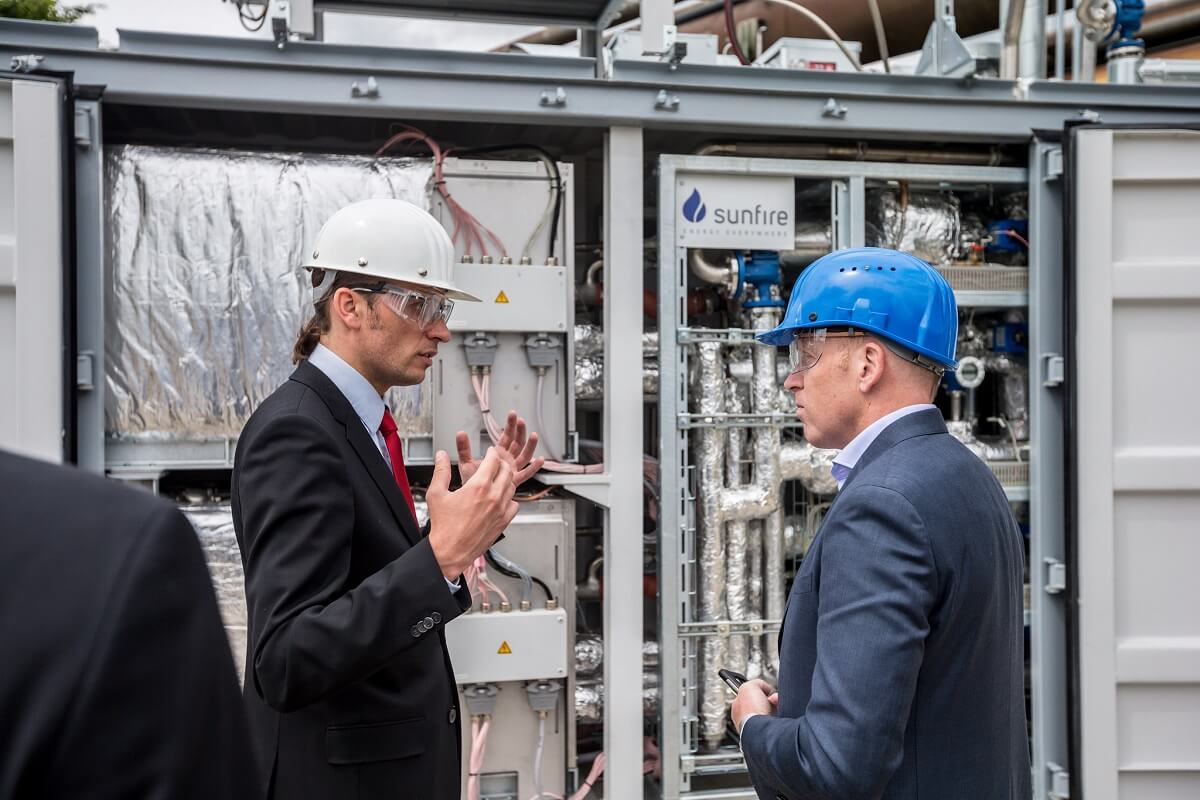Editor’s note: The device described here is another way to store excess wind generated power.
*Steam electrolysis with an input power of 150 kW produces 40 Nm³ of hydrogen per hour, high electrical efficiency greater than 80% by using waste heat (steam)

Sunfire GmbH has delivered the world’s most efficient steam electrolysis module in the context of the Horizon 2020 project ‘Green Industrial Hydrogen via reversible high-temperature electrolysis’ at Salzgitter Flachstahl GmbH.
* Fuel cell mode with up to 30 kWel (kW electric) using hydrogen or natural gas
* Demo operation in the context of the GrInHy project in the integrated smelting plant at Salzgitter Flachstahl GmbH. Trial operation for energy balancing and load management
Sunfire GmbH has delivered the world’s most efficient steam electrolysis module (SOEC) in the context of the Horizon 2020 project ‘Green Industrial Hydrogen via reversible high-temperature electrolysis’ (GrInHy) at
Salzgitter Flachstahl GmbH. With an input power of 150 kWel, the module produces 40 Nm³ per hour of hydrogen. It can also be reversed into fuel cell mode with an output power of 30 kWel.
A particular feature of Sunfire technology is the high electrical efficiency of more than 80 percent with reference to the lower calorific value of hydrogen as it is not liquid water but gaseous water – i.e. steam – which
undergoes the splitting process. The steam required is provided in the form of waste heat from the processes of the smelting plant at Salzgitter Flachstahl GmbH and supplied to the steam electrolysis unit. This is housed
in a 20-foot container on the production site. After purification, the crude hydrogen is fed directly into the local H2 pipeline and recycled.
The delivery from Dresden to Salzgitter took place in June 2017. Two smaller modules were put into operation at Boeing back in 2015.
In fuel cell mode, the module can be operated with both hydrogen and natural gas. In demo operation, one of the points being investigated is the extent to which the plant can contribute to the provision of grid services (energy
balancing, load management). Hydrogen is used in the integrated smelting plant in order to produce a protective gas atmosphere, i.e. one which excludes oxygen and prevent the oxidation of steel during the annealing
process. The use of green hydrogen improves the environmental balance of the end product (the carbon footprint).
The GrInHy project has received support in the context of the European Union “Horizon 2020” program (no. 700300). In addition to Salzgitter Flachstahl, BR&T-E and Sunfire, the following partners are also involved: Salzgitter Mannesmann Forschung GmbH, VTT Technical Research Centre of Finland, EIFER -European Institute for Energy Research, Institute of Physics of Materials, Academy of Sciences of the Czech Republic and Politecnico di Torino.
For further information: http://www.green-industrial-hydrogen.com
Filed Under: Energy storage, News




